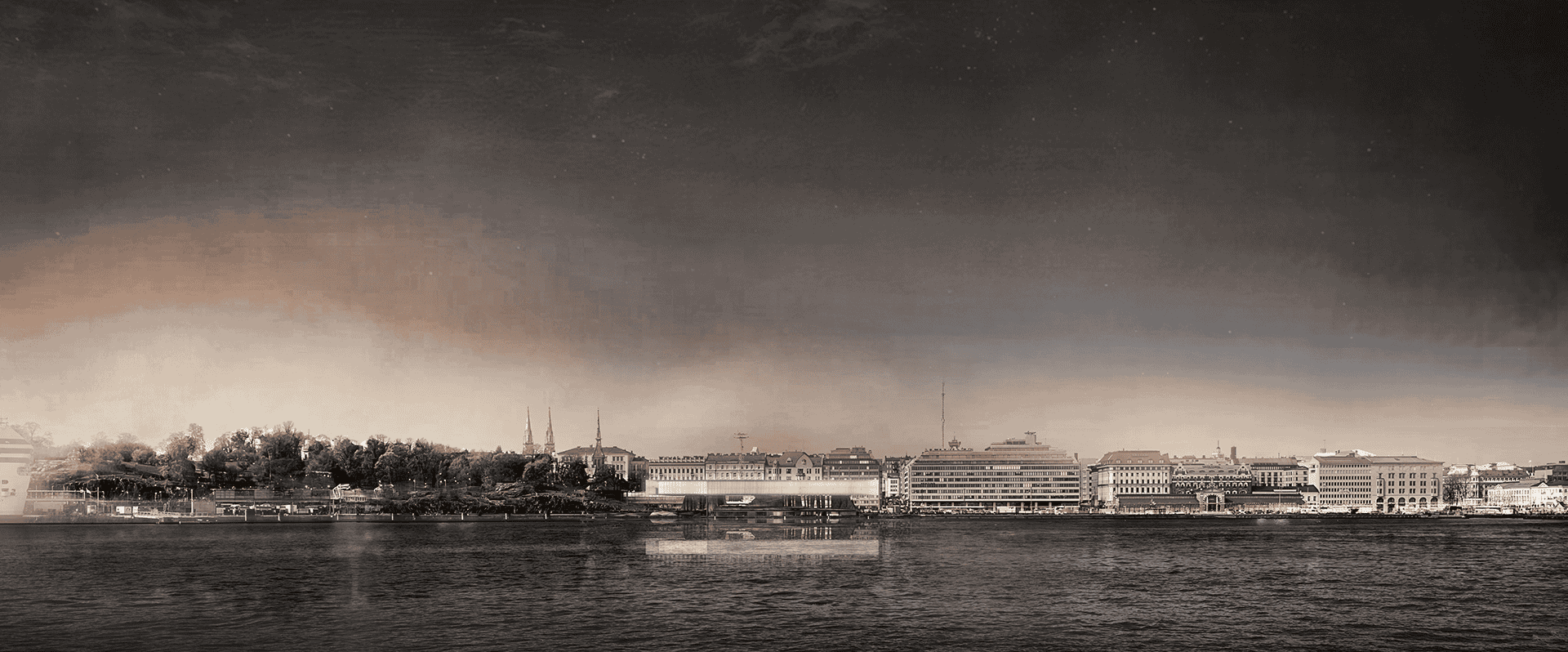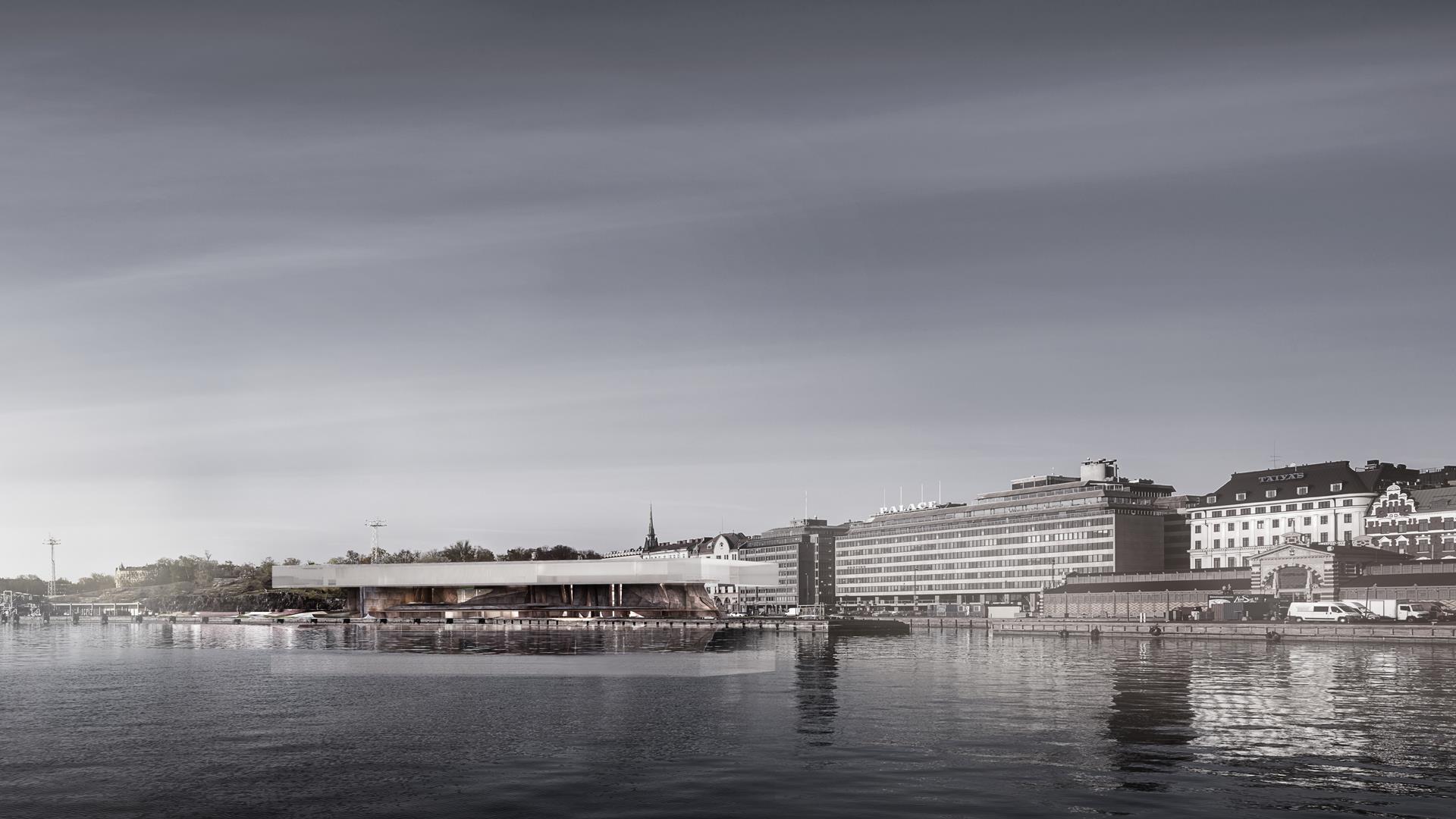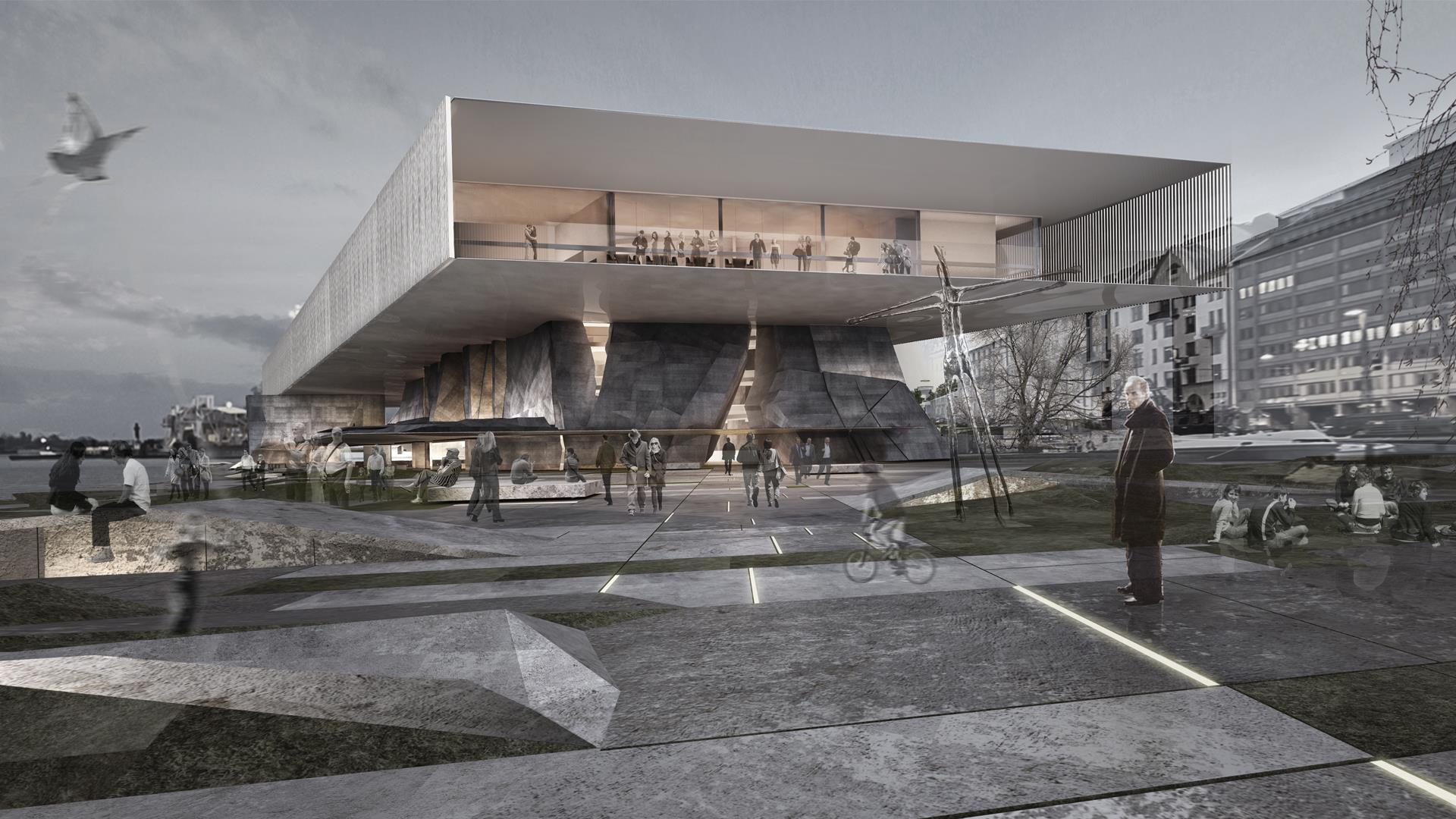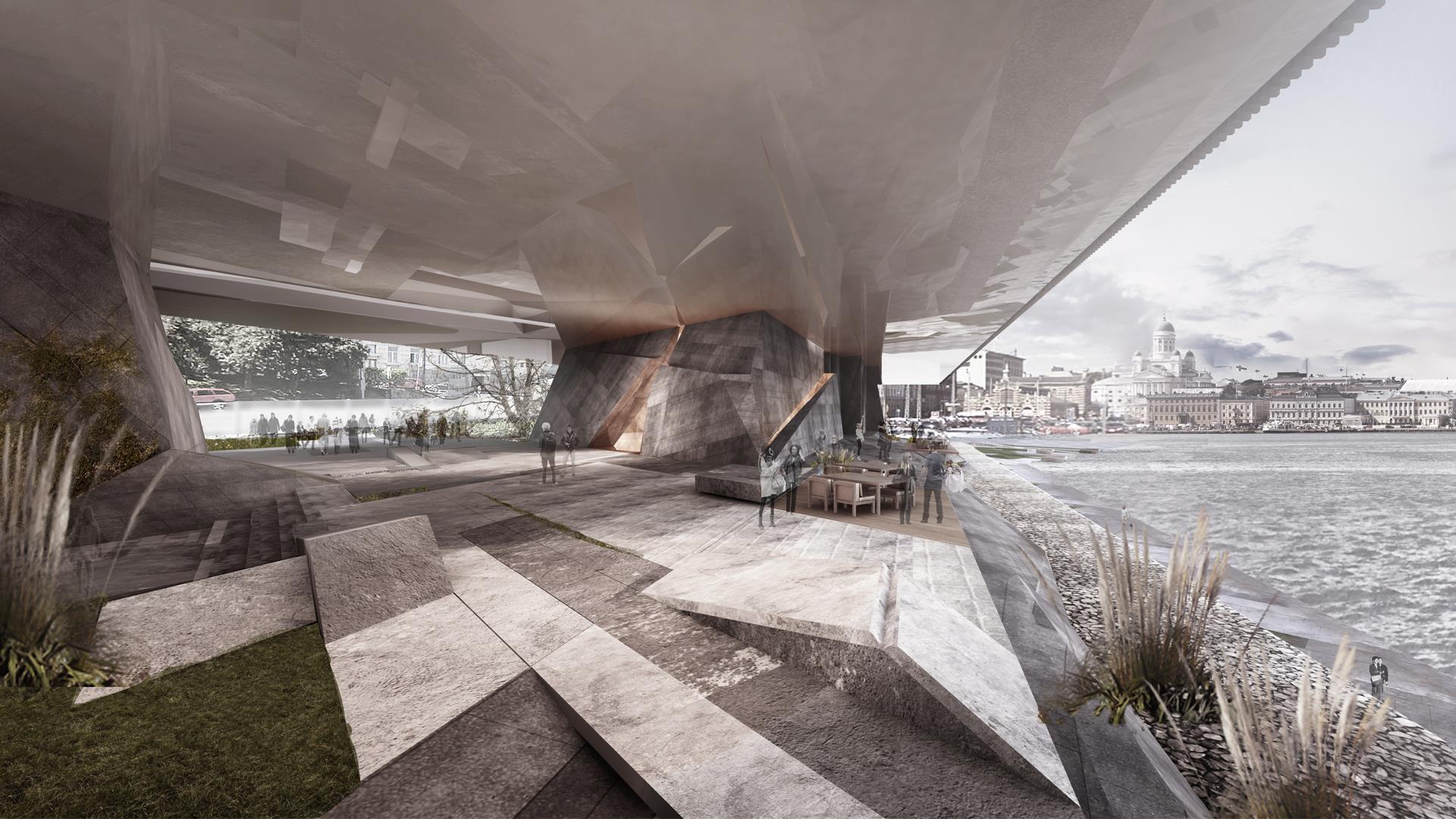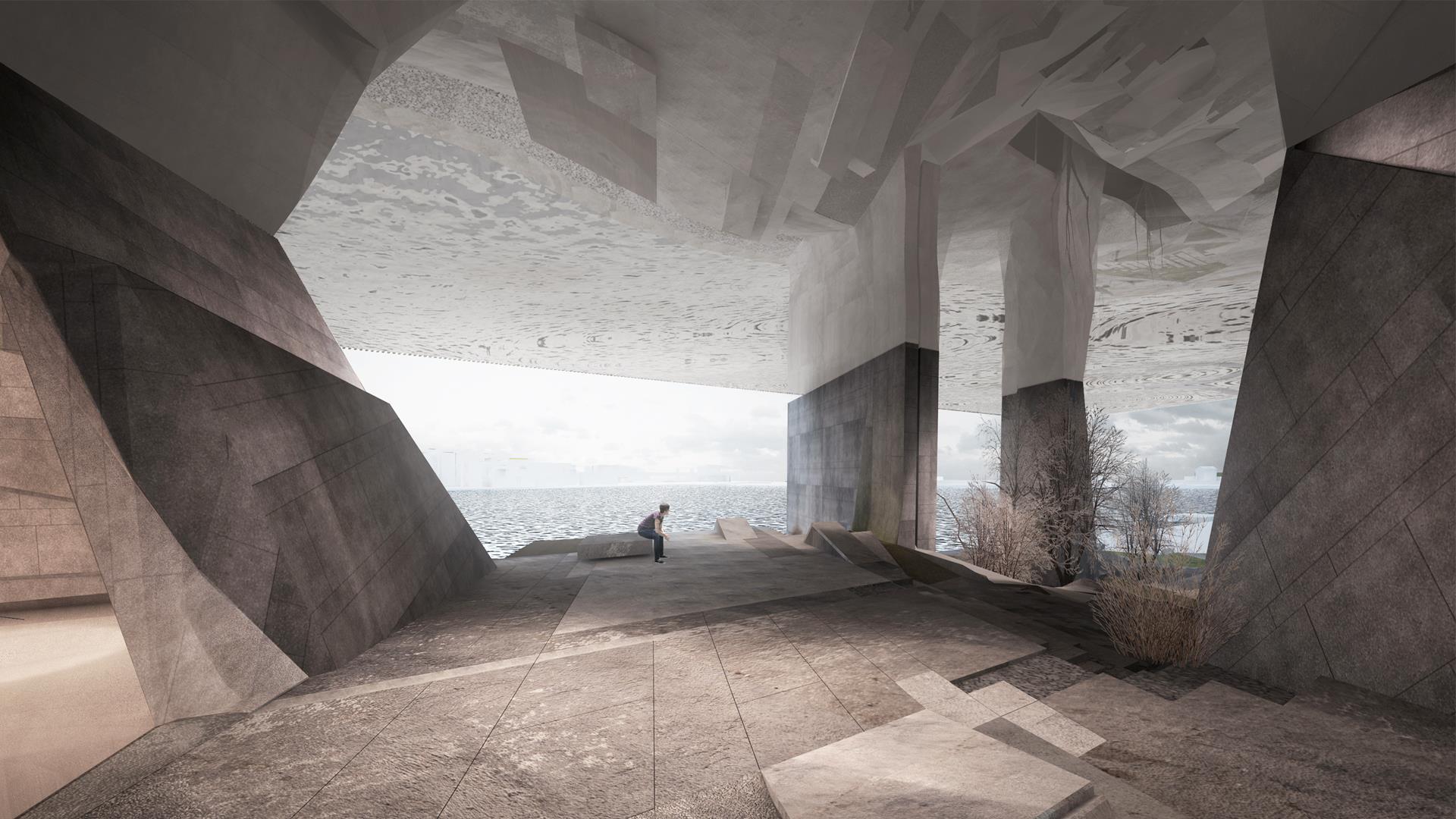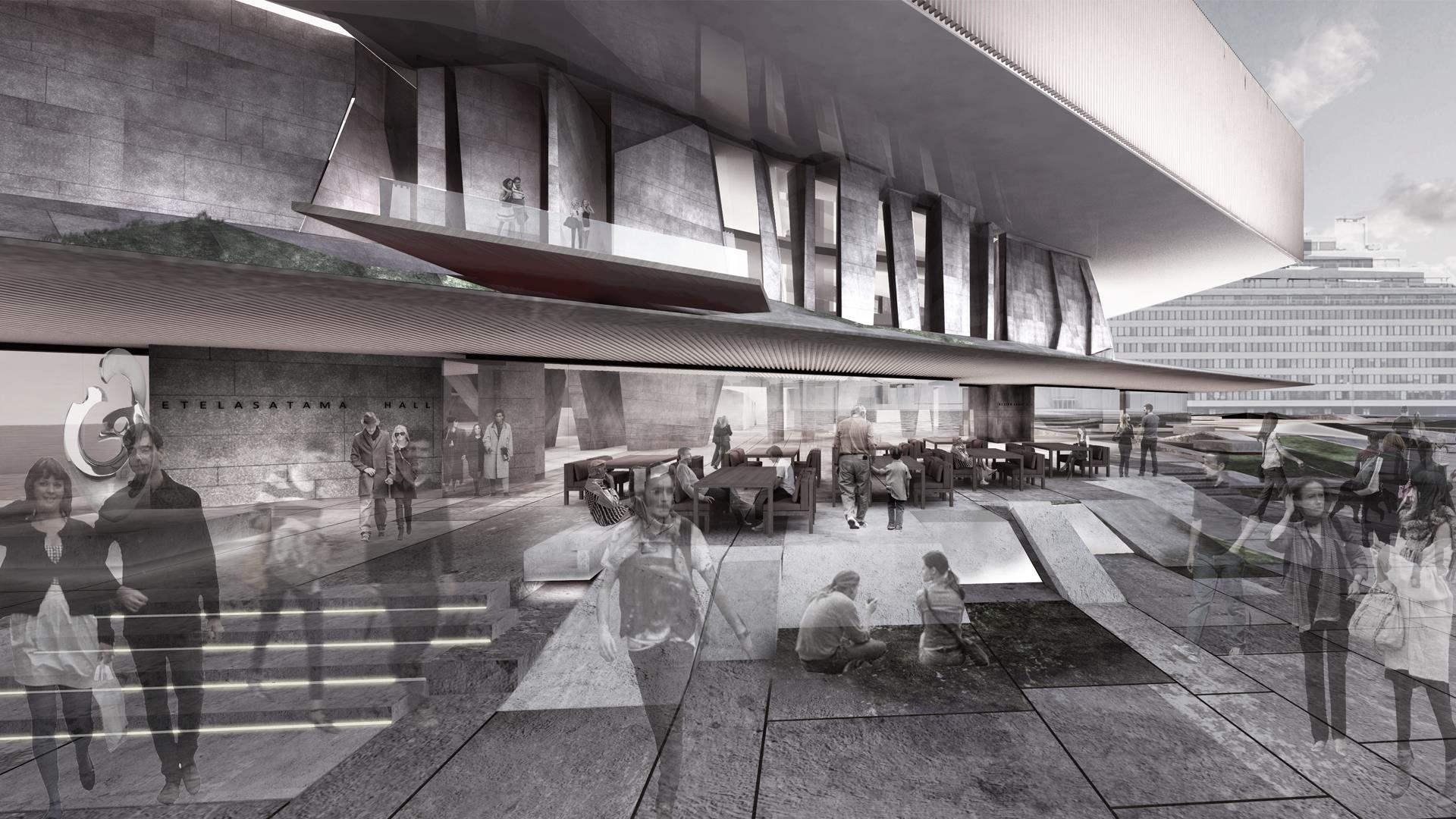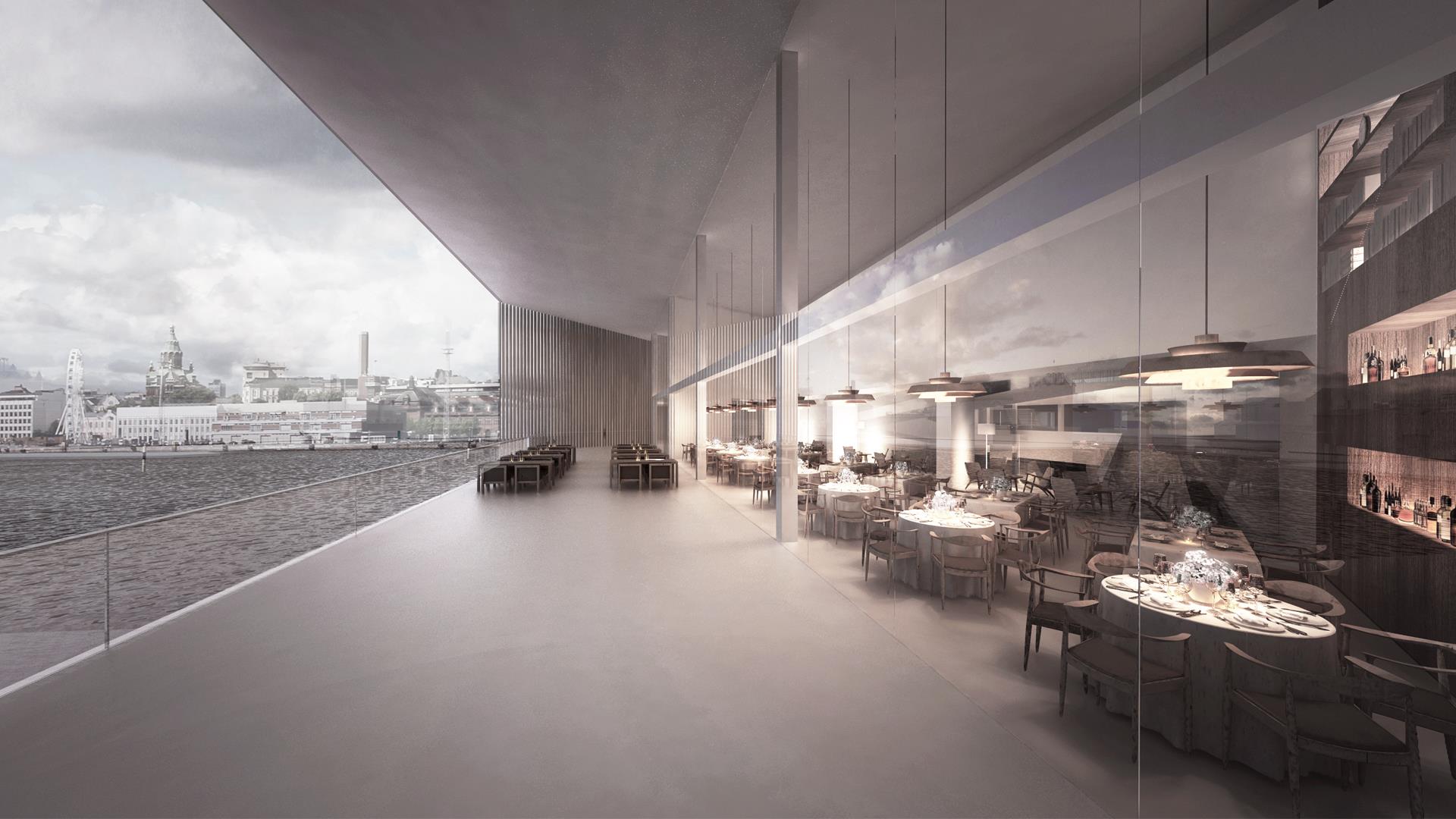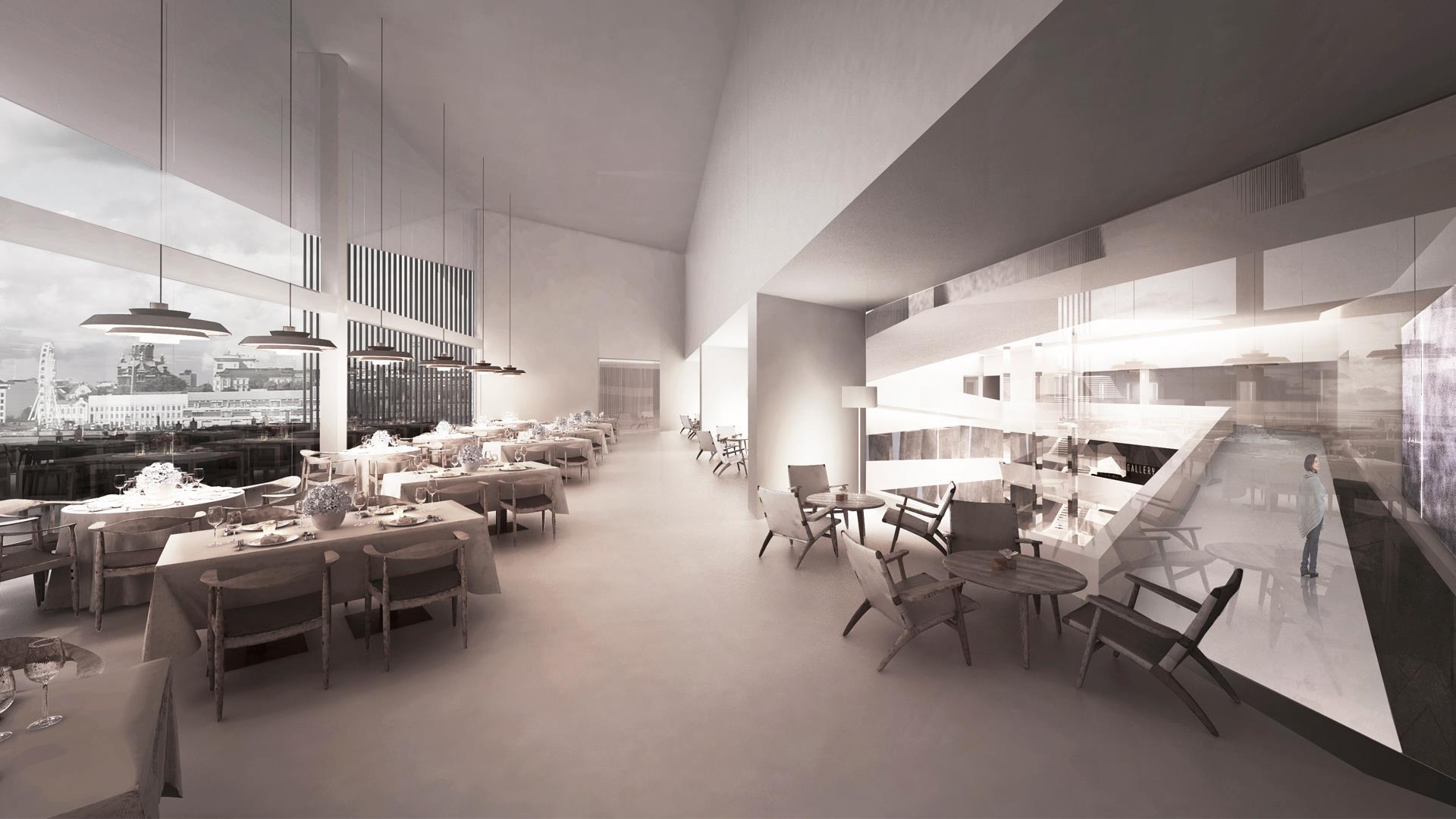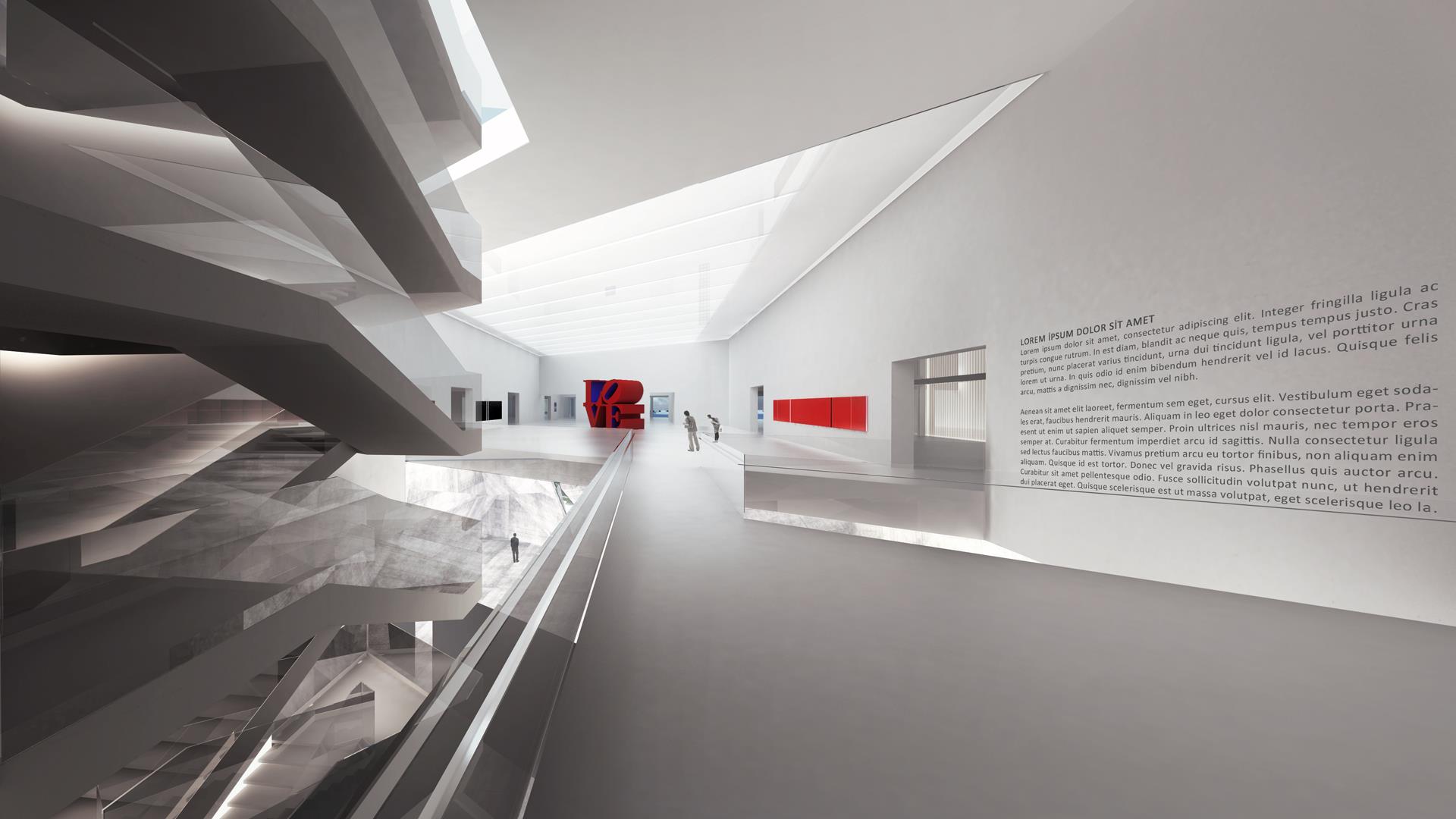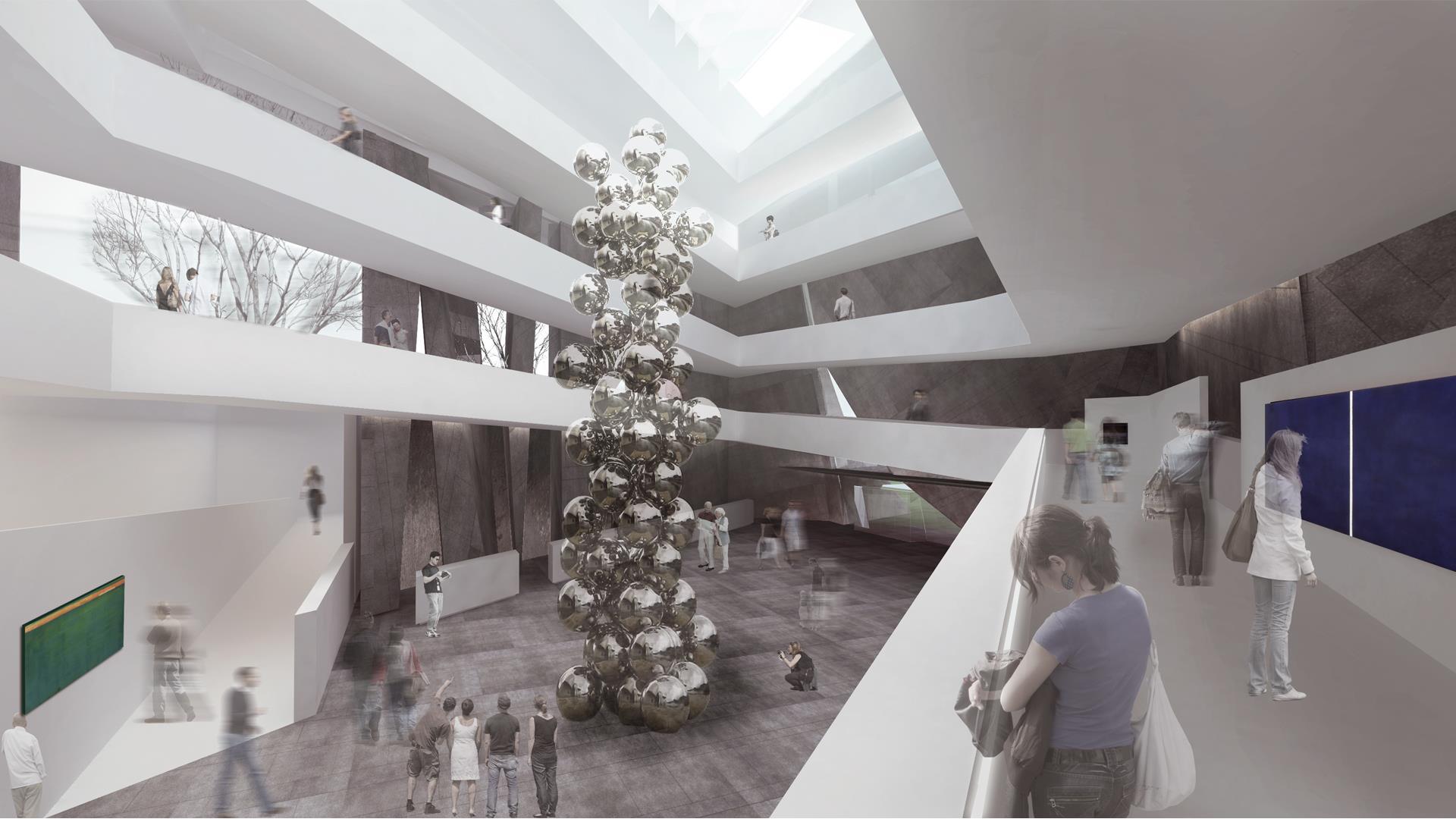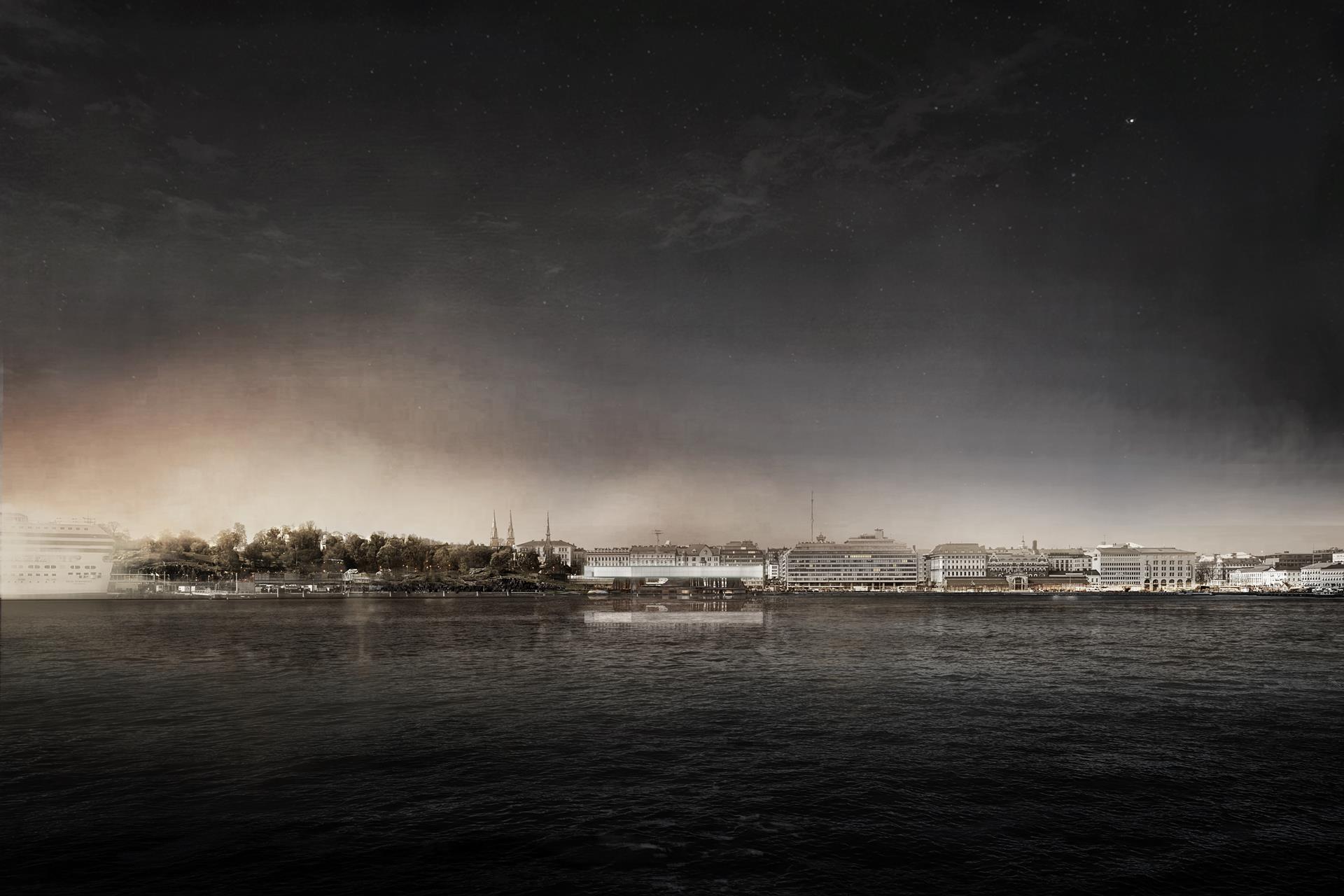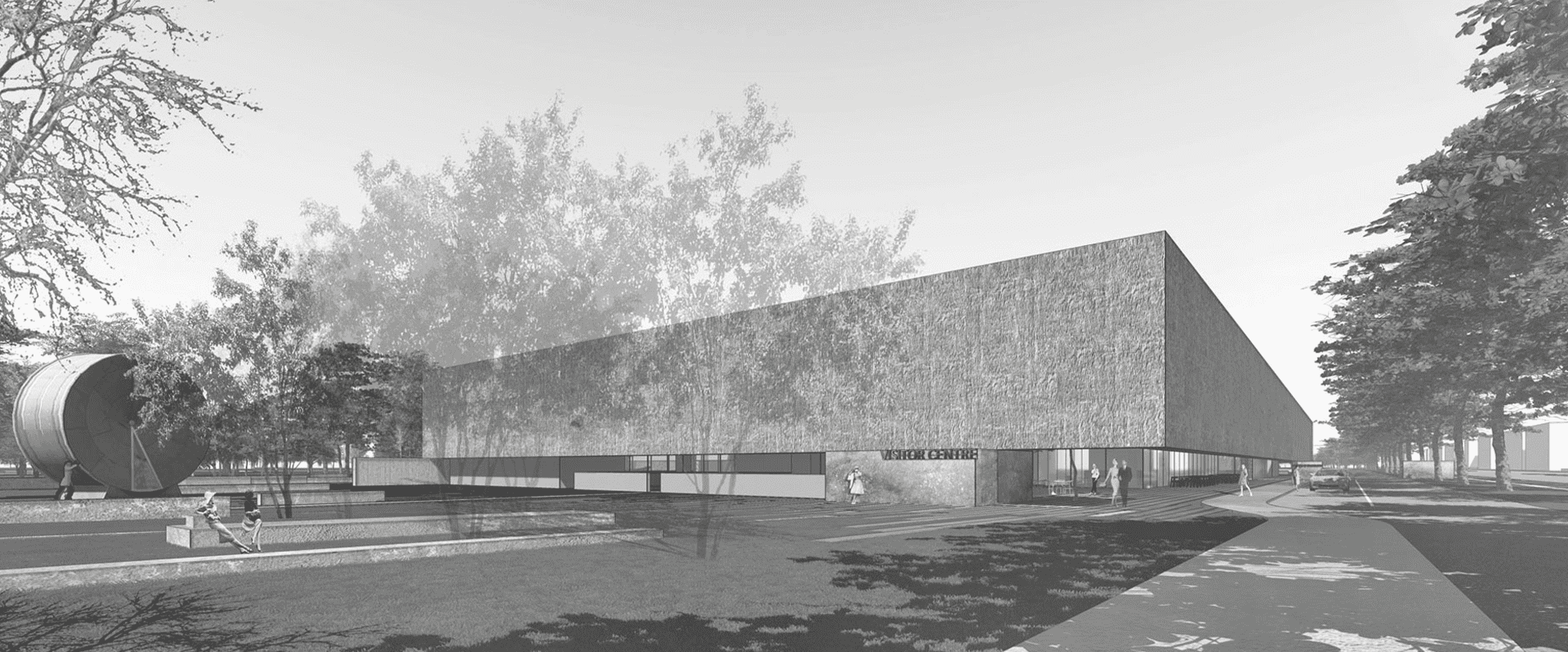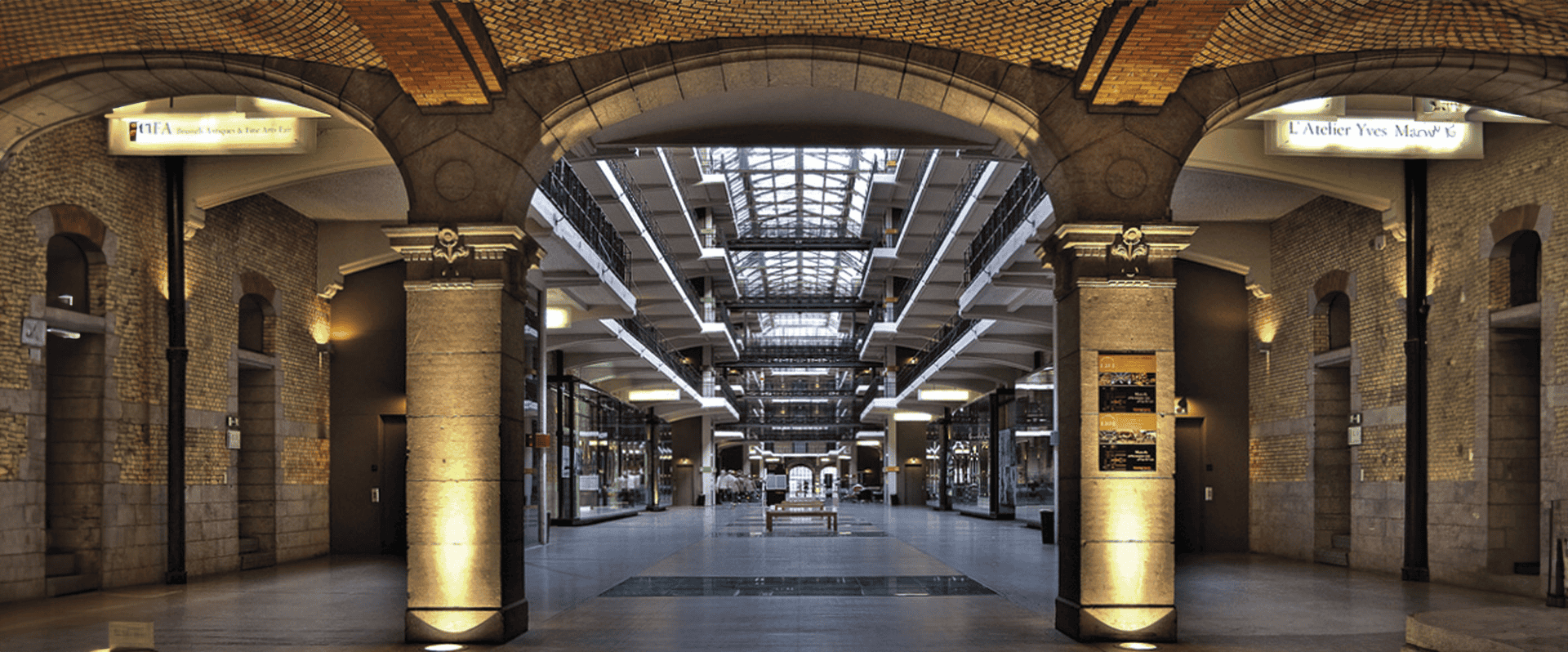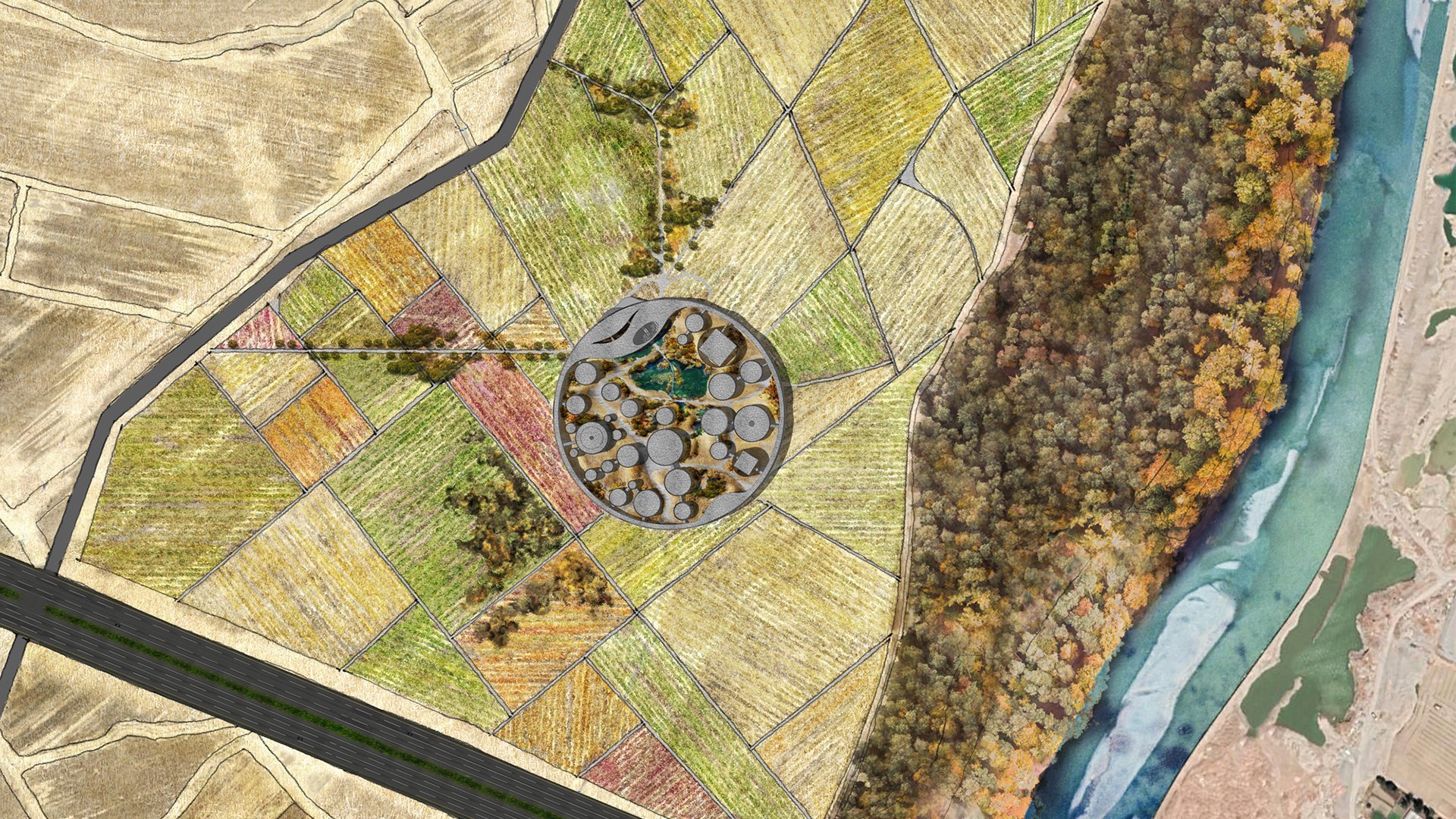The urban morphology of Helsinki city center is determined by a principal cross, that is the main axes, and the various angles derived from the edge of the waterfront. The continuous regular pattern is incidentally interrupted by ‘islands of rocks’, which is one of the peculiar characteristics of Helsinki. In an ordinary walking tour, one can eventually come across the expressive formation of rocks, sometimes standing alone and sometimes in a dramatic relation with the manmade surroundings. These ‘islands’ give a clue to the original character of landscape covered by the ‘urban fabric.’ This should also remind us the fact that Helsinki was founded on an archipelago, and extended its order over such a geography. The map showing gradual changes of the coastal line in history gives us a clear image of prevailing order of the city.
Helsinki Guggenheim Museum is conceived as a ‘hinge’ –between the grid of the city and the linear character of harbor area, the urban fabric and the nature, the Park and the seafront, and yet between culture and recreation.
The site is located at a threshold where the urban grid of typical Helsinki blocks starts to dissolve into a less dense composition. Tähtitornin Vuori Park makes this transformation more visible from various viewpoints. The change in the character of urban fabric is quite readable in the silhouette.
The basic idea is to propose a building that belongs to neither of these patterns, instead it will be a ‘sign’ that is less –or more – than a building in the conventional sense of the word. Rather than being a mere continuation of the urban grid or being a part of the rocky hill, it is a distinguished ‘object’ that is implicitly pointing to the transition in the character of urban fabric.
The building is composed of two separate layers which have clear references to the context: the boundaries of horizontal ‘flying box’ elevated from the ground are determined by the grid lines of urban blocks and the line of waterfront; whereas the substructure beneath this box is articulated by fragmented parts and broken faces that are in dialog with rocky islands of Helsinki.
The separate layers in section are combined within a dramatic composition –that is also in accord with the character of Nordic Architecture: a serene coexistence with the dramatic character of natural environment.


